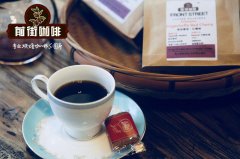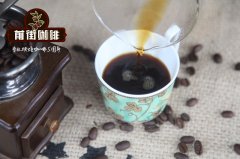Ethiopia Sunlight Iluba Delicious Ethiopia Sunlight Iluba Flavor Description

Professional coffee knowledge exchange more coffee bean information please follow the coffee workshop (Wechat official account cafe_style)
Ethiopia
Illubabor Dabi
Darby has ripe fruit and local flavors, including dried berries, cantaloupe, musk Annona and canned plums. Bittersweet and earthy chocolate in full city with the characteristics of large berries.
African region
Dry process (natural)
Sun drying method to raise the bed for sun drying
The bag size is 60kg.
Packing grainpro liner
The farm gate, yes.
Variety detailed heirloom variety
Grade 3
The coffee comes from Dabi, a cooperative coffee wet grinder located in the Illubabor region of western Ethiopia. The origin of coffee is about 1800 meters above sea level, and coffee is collected from 1700 meters above sea level (not "low" in any case) to 2200 meters high. The cooperation began about 50 years ago, and in the recent direction of "science and technology services", it was possible to build a brand new wet mill, overhauling agronomic practices in 2010 to produce high-quality products and ordering higher premium farmers (they measured to set up new factories after paying 50% more farmers a year before). Darby has about 1000 farmers and coffee plantations cover an area of nearly 1400 hectares. This is a drying process, which means that the whole cherry, seed and all are simply placed on a raised drying bed to dry for about 20 days, and then use a shelling device to remove the dry outer layer. Dried coffee can be fruity and moderate in acidity. All three statements apply.
Darby's pristine character makes it closer to the classic Harrar coffee than the more primitive Yirga Cheffe and Guji coffees of the past few years. Fruity and potential sweetness are highlighted in a rustic, fragrant haze. In the city + brewing coffee to produce large berry flavors, it may be a bit confusing at this stage, but somewhere in the BlackBerry / blueberry flavor matrix. Cold coffee has a lot of cooked fruit flavor, berries are the most obvious, but other noteworthy include cantaloupe, musk cherries and canned plums. Complete urban baking produces a bittersweet and fruity cup-shaped outline, like the lighter end of the baking spectrum, full of forest-like earthy tones and leather-like notes. I like this independent coffee, but it is also a mixture that can be considered to add wild fruit and body. And it won't disappoint those looking for fruit.
END
Important Notice :
前街咖啡 FrontStreet Coffee has moved to new addredd:
FrontStreet Coffee Address: 315,Donghua East Road,GuangZhou
Tel:020 38364473
- Prev

Ethiopian Yilu Gbagbo coffee is Ethiopian Yilu Gbagbo coffee good?
Professional coffee knowledge exchange more coffee bean information please follow the coffee workshop (Wechat official account cafe_style) Western Ethiopia, Illubabor cooperation: Dabi craft: dry (natural) craft variety: heirloom type altitude: 1700-2200 m score: 87 cup notes: berry fruit notes, bittersweet local cocoa, forest soil tone is the cooperation of Iraq
- Next

Ethiopia tepi coffee production area introduction Ethiopia bebeka coffee production area introduction
Professional coffee knowledge exchange More coffee bean information Please pay attention to coffee workshop (Weixin Official Accounts cafe_style) Tepi and Bebeka coffee grow at an altitude of 1000 - 1100 meters. Similar to their unique and popular taste, which is a reflection of their specific location, they are often used in blends. Topi coffee has a lower acidity and a softer taste, but it helps roasters blend coffee.
Related
- Beginners will see the "Coffee pull flower" guide!
- What is the difference between ice blog purified milk and ordinary milk coffee?
- Why is the Philippines the largest producer of crops in Liberia?
- For coffee extraction, should the fine powder be retained?
- How does extracted espresso fill pressed powder? How much strength does it take to press the powder?
- How to make jasmine cold extract coffee? Is the jasmine + latte good?
- Will this little toy really make the coffee taste better? How does Lily Drip affect coffee extraction?
- Will the action of slapping the filter cup also affect coffee extraction?
- What's the difference between powder-to-water ratio and powder-to-liquid ratio?
- What is the Ethiopian local species? What does it have to do with Heirloom native species?

